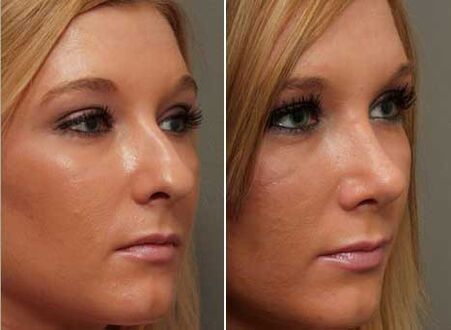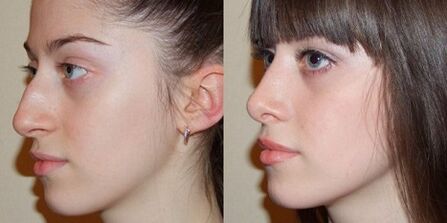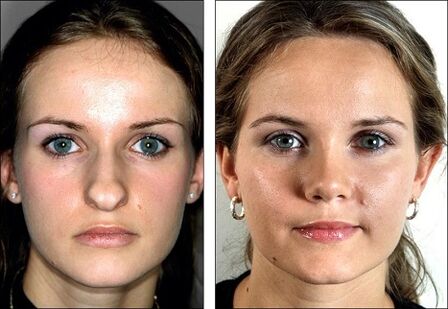The nose is an integral and important part of the face, significantly affecting our beauty and aesthetic appearance. In this article, we analyze how rhinoplasty can be used to correct smaller and larger deficiencies in the shape of the nose.

What is rhinoplasty?
Rhinoplasty has been used in plastic surgery since the late 19th century and is a fairly well-studied method of nasal correction. First, it has a cosmetic effect: it compensates for congenital defects in the shape of the nose, nostril, or nasal septum, as well as defects acquired as a result of trauma. Second, it has a therapeutic effect because the curved shape of the nose often causes major problems with respiratory and respiratory diseases.
Despite its knowledge and popularity, the surgical technique is quite complex and requires a responsible approach not only from the doctor but also from the patient. First, the doctor must be consulted in detail before the procedure and all the medical examinations he prescribes. If necessary, computed tomography. Important! Because in the presence of significant contraindications to such operations, you can get irreversible side effects on your health. Drugs should not be ruled out, no smoking and no alcohol should be ruled out a few weeks before surgery.
Rhinoplasty of the nose: before and after photos

The success of surgery depends directly on the professionalism and experience of the doctor. The shape of the nose, as well as the surgical procedure, not only has great cosmetic significance in changing it, but also has a significant impact on medicine. The various parts of the nose are tightly connected to the entire respiratory system.
Therefore, this procedure requires a thorough preliminary examination of both the nose and the associated facial structures. Manipulations performed by the physician should be clear and justified so as not to have undesirable consequences for the patient's health. As a result, avoid reoperation. Therefore, when choosing a clinic, the price of the procedure itself should not be given priority. Pay special attention to the qualification and review of the physician.
The moment of dissatisfaction with the postoperative appearance is virtually ruled out. Today, every clinic is capable of computer modeling and choosing the right nose shape for you. You can see with your own eyes how you will take care of the procedure and make your own settings.
Important tip: consult your doctor before making a final decision. Your unsatisfactory appearance may not be affected by the shape of your nose, but there are corrections or corrections in place on completely different parts of the face. Even in the absence of visible defects and damage, there is still the possibility that dissatisfaction with oneself has a purely psychological aspect. In both cases, the visible result of the procedure will be quite negative. Therefore, approach the issue responsibly.

At what age can a rhinoplasty be performed?
Nasal correction procedures are not recommended until the age of 18 or better, before the age of 20. This is due to the fact that before this age the process of nasal cartilage formation takes place. And by the age of 20, they are fully formed. Even after 40 years, the procedure is not recommended for patients. In this age, the healing process of the tissues will be much slower, the operation will be more complicated. Nasal correction is contraindicated in patients with diabetes mellitus, all types of oncology, cardiovascular disease, and poor blood clotting.
Types of nasal rhinoplasty
The rhinoplasty procedure is open and closed, depending on what needs to be corrected. In case of closed rhinoplasty, incisions are made inside the nose, scars do not remain on the surface of the skin. The open type is used when it is impossible to complete the total amount of work set out in the operational plan. The resulting scars practically disappear after 1-2 months.

Postoperative recovery period
Rhinoplasty, like any operation, has its own healing time. It has short-lived but unpleasant consequences. In the first days, mild pain in the nose is possible. Because of the special tampons, you also have to breathe through your mouth, which is then removed. In addition, mild bleeding may occur for 2-3 days. But this is normal and not to be feared.
After surgery, a special patch is applied to the patient, which has a fixative and protective function. After about a week, this plaster is removed and the stitches are removed. The swelling under the eyes goes away in about 2-3 weeks. Well, you can evaluate the end result of your surgeon’s work in 6 months at the earliest.
Finally, a few months after the rhinoplasty, you need to be extremely careful not to exercise or do physical activity and relax a lot. Wearing glasses is also not recommended.






















